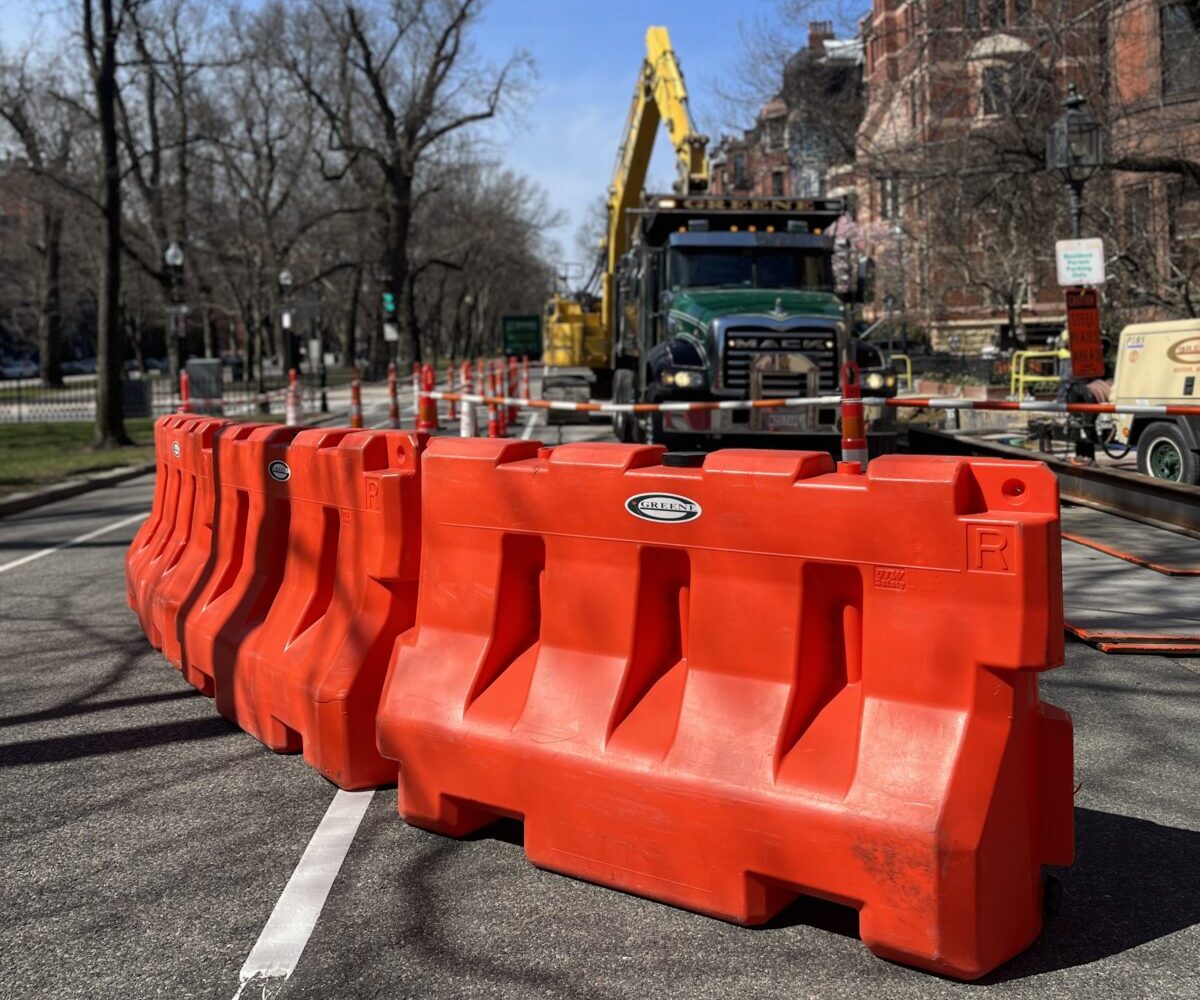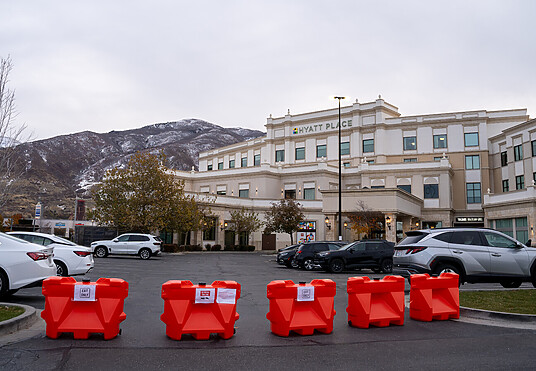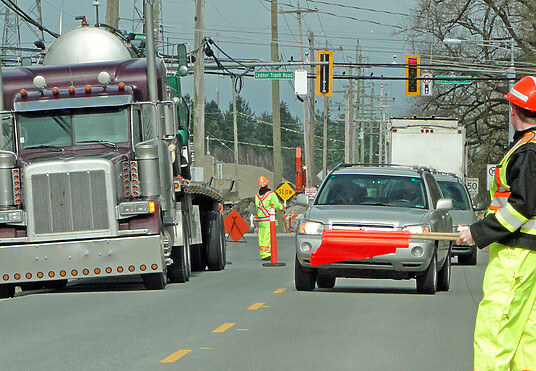Improved Traffic Control Devices: Best Way to Reduce Highway Work Zone Crashes

Highway work zones create an inevitable disruption in regular traffic flows that result in traffic safety problems, and work zone safety remains unsatisfactory nationwide. In 2004, 1,068 people were killed in work zones, adding about 49,620 more work zone related injuries (FHWA 2006). The direct cost of highway work zone crashes, estimated based on the crash data from 1995 to 1997, was as high as $6.2 billion per year: an average cost of $3,687 per crash (Mohan and Gautam 2002). Understanding the characteristics and major causes of highway work zone crashes is a critical step towards developing effective safety countermeasures in highway work zones.
In 2004, the Kansas Department of Transportation (KDOT) initiated a project (K-TRAN Project No.KU-05-01) to study the fatal crashes in Kansas highway work zones between 1992 and 2004. The study results including crash characteristics and major crash contributing factors were published in Bai and Li (2006). Built on the previous success, KDOT sponsored another research project (K-TRAN Project No. KU-06-01) to further study the injury crashes during the same period in Kansas highway work zones. The significant insights from this study are valuable for the design of safer highway work zones and for the development of safety countermeasures that have potential not only in reducing the number of crashes but also in mitigating the crash severity.
According to the literature, the importance of having safe work zones for both construction workers and highway users has been widely recognized. Despite the effort devoted in this subject, there is little indication that work zone crashes are on the decline nationwide. An important reason behind this might be that current countermeasures are not working effectively enough in the work zones.
The effectiveness of work zone traffic controls is directly related to work zone safety. In the data analysis of this study, crash frequencies were also categorized under different traffic control devices. It was found that 72% of the crashes occurred on the pavements marked with center/edge lines. Other traffic control devices present in crash work zones included: traffic signal (15%), no passing zone (14%), and stop sign/signal (7%). 11% of the crashes occurred in work zones with no or inoperative traffic control and 15% occurred with presence of other traffic control devices.
Driver errors were the most common causal factor for work zone injury crashes. Data analysis results did not support that factors such as inclement weather conditions and unfavorable pavement conditions had significant contributions to injury crashes. Complex geometric alignment features such as grades and curves had some impact on the occurrences of the injury crashes: 34% of the crashes occurred on complicated alignments and 46% of the single-vehicle crashes occurred on complex alignments. The fact that 24% of the total crashes or 33% of the multi-vehicle crashes occurred in intersections or intersection-related areas indicates that the presence of an intersection in highway work zones was a contributing factor to injury crashes. In our opinion, this would point to the use of Longitudinal Channelizing Devices to clearly delineate the traveled way in complex geometric alignments, as a great improvement in more than 1/4 of all work zone accidents.
Improvement of traffic control is the most direct method to reduce highway work zone crashes. In particular, based on the characteristics of highway work zone crashes, the following traffic control improvements are recommended.
- More effective speed control strategies. The high composition of crashes in high-speed zones and the dominance of rear-end collisions in injury crashes indicate a strong association between high speeds and work zone injury and fatal crashes. Therefore, controlling speeds is a key step towards improving work zone safety.
- Effective headway control strategies. The study found that the most common type for injury crashes was rear-end collisions. In addition, in many work zones, the remaining travel lanes are usually separated from construction areas by channelization devices and it is often impossible to escape from a following high-speed vehicle in the travel lane. Therefore, it would be effective to utilize a gating channelization device such as a Longitudinal Channelizing Device (LCD) to allow vehicles to exit the traveled lane in an emergency situation.
- More effective warning devices. The fact that inattentive driving contributed most of the fatal and injury crashes in work zones suggests an immediate need for effective approaches to warn the inattentive drivers of the upcoming work zone conditions. When construction workers and/or other personnel are present in traffic lanes, such devices that can effectively alert inattentive drivers become extremely important. The researchers hence recommend the use of more effective warning devices such as temporary rumble strips or other raised pavement markings in highway work zones.
- Other traffic control improvements. The study of both injury and fatal work zone crashes also suggested needs for other traffic control improvements. For instance, the high percent of nighttime fatal crashes might be reduced by installing illumination or highly retroreflective devices in the work zones at nighttime. Installation of median separators, such as plastic water filled barriers, LCD’s, and concrete barrier should be considered in some work zones to eliminate head-on crashes, one of the major collision types for fatal crashes.
In addition to the improvements on work zone traffic controls, education will be a promising supplement for maximized safety improvement in highway work zones. The crash investigation showed that male drivers caused most of both fatal and injury crashes in Kansas highway work zones. Drivers younger than 25 years of age, especially males in the teenage driver population, were responsible for a large proportion of the injury crashes. Drivers aged 35 to 44 and older than 64 were the groups with the highest fatal crash rate in Kansas work zones. Truck drivers also create safety problems in work zones especially by contributing to a large percent of work zone fatal crashes. The researchers suggest launching a risk-driver-oriented education program in order to raise awareness of highway work zone hazards. The fact that a major cause of most crashes was human errors also indicates the urgency for developing effective education programs for the traveling public.

